Contents
On average, about 30% of shark species lay eggs, and many small-sized sharks follow this reproductive method. To protect their eggs from deep-water predators, they deposit them near the shoreline, particularly in shallow coastal waters, reefs, or rocky areas.
These eggs, often called mermaid’s purses, come in various shapes and sizes depending on the species. Many have tendrils or curly-edged structures at the corners, which help them anchor to underwater structures like seaweed or coral reefs.
However, some shark eggs fail to stay attached and may wash up on the beach due to natural factors such as strong ocean currents, weak attachment, predator disturbances, or tidal movements pushing them ashore.
If you find a stranded egg on the beach, you may be able to save it. If the egg case is undamaged and the embryo inside is still alive, carefully placing it back in the water near a reef or rocky area can improve its chances of survival.
The egg case’s coloration changes over time, from when it is first laid until the embryo hatches. During development, the embryo sustains itself by feeding on the yolk.
Although egg cases provide a tough protective covering, they are still vulnerable to predation by snails and other marine organisms.
Shark Eggs and Egg Cases Identification, Egg Cases Identification, Type of Shark Eggs
1. Ghost Shark
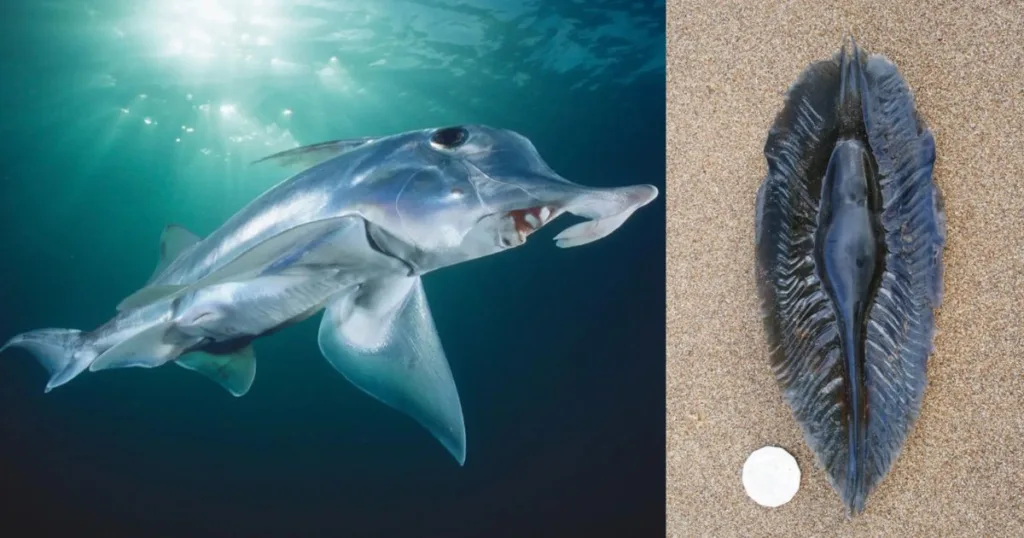
Ghost shark egg cases measure up to 25 cm in length and 10 cm in width, with a golden-yellow color when first laid.
Over time, their coloration changes from golden yellow to brown and eventually black before hatching.
It takes approximately 8 to 10 months for the eggs to hatch.
2. Australian Swell Shark (Draughtboard Shark)
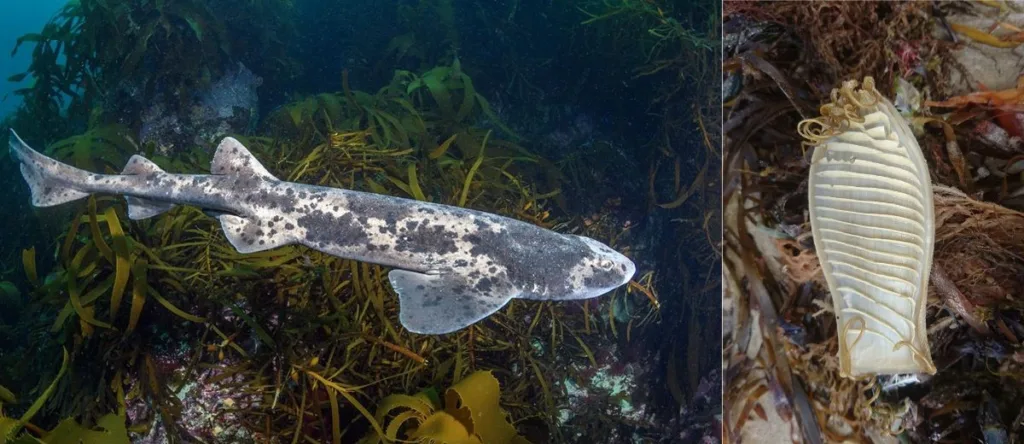
Australian Swell Sharks produce unique, flask-shaped egg cases that are cream-colored with 19 to 27 horizontal ridges.
These eggs are laid one after another over 24 hours and take around 11 to 12 months to hatch.
3. Horn Shark
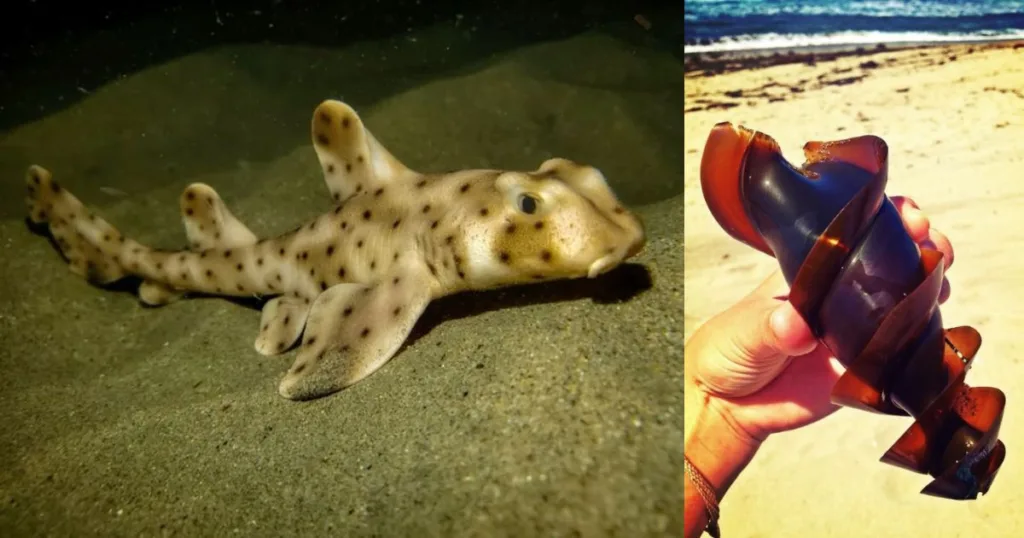
Horn shark egg cases are distinct from other shark eggs. They are conical in shape with two broad spiral flanges, a design that helps them wedge securely into rocks or other underwater structures.
Hatching time varies between 6 to 10 months, depending on water temperature. (Ref)
4. Zebra Shark
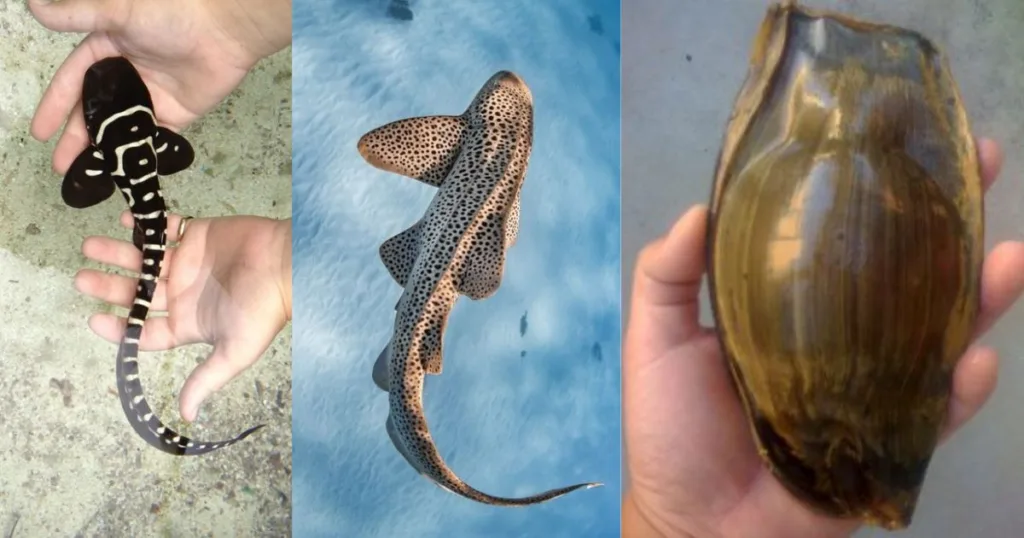
Zebra shark eggs are oblong, measuring between 6.0 to 9.0 cm, with a soft, leathery shell and a yellowish-brown color. As zebra sharks grow, their body patterns change from stripes to a spotted appearance, resembling a leopard. The striped pattern in their early stages helps deter predators by mimicking venomous sea snakes. Their eggs hatch after approximately 4 to 6 months.
5. Skate Fish
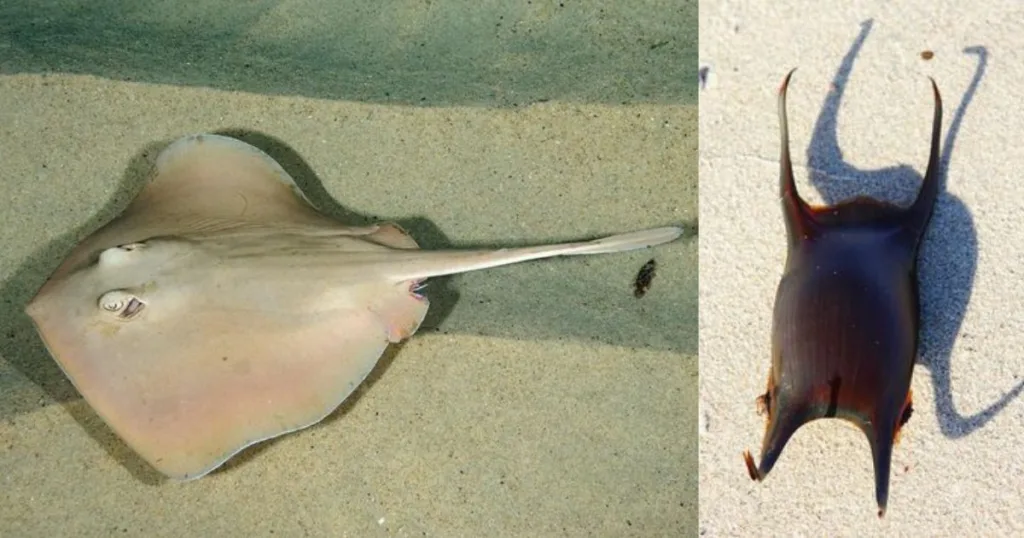
Surprisingly, Skatefish also lay eggs, and their egg cases share similarities with shark eggs.
Depending on the species, skate eggs can take anywhere from 3 to 15 months to hatch.
The size of the eggs also varies between species.
Type of Shark Eggs
6. Common Cuttlefish
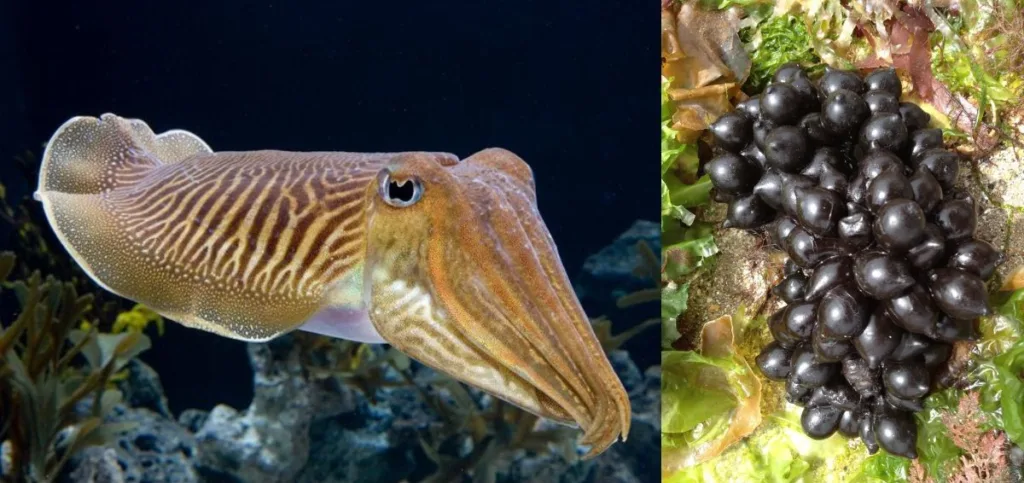
Common cuttlefish lay grape-shaped eggs in shallow waters, attaching them to rocks, coral reefs, and sandy seafloors. Its eggs are attached to underwater structures using a gluey substance produced by the female cuttlefish.
Hatching time may differ depending on water temperature, ranging from 1 to 5 months. If cuttlefish eggs wash up on the beach, their chances of survival are extremely low, as the embryos generally die within hours once out of the water.
Shark Eggs and Egg Cases Identification, Egg Cases Identification, Type of Shark Eggs
Here you can find A-Z Unavoidable Truths About Pigs You Should Know: 22 Interesting Facts About Pigs
